The Gift of South Dakota
Subscriptions to South Dakota Magazine make great gifts!
Subscribe today — 1 year (6 issues) is just $29!
Lead’s International Flavor
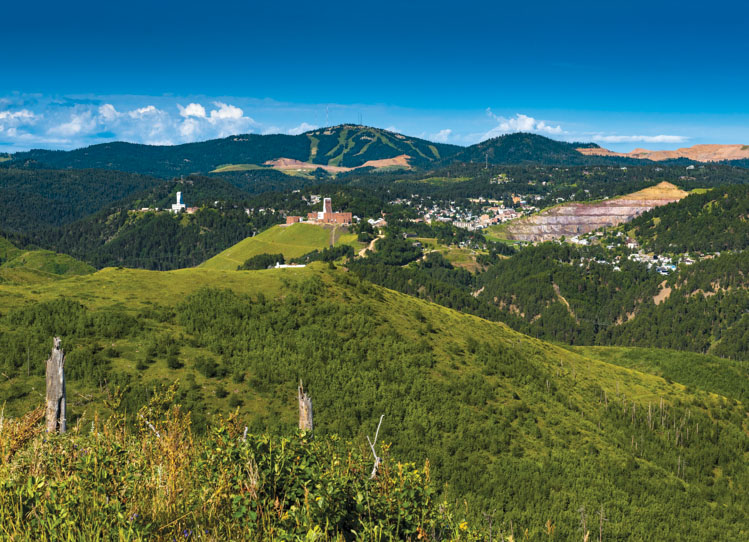 |
| Lead has always been home to many cultures, from the hard rock miners who toiled at the Homestake Gold Mine to today's scientists making groundbreaking discoveries at the Sanford Underground Research Facility. |
Spring comes late to Lead due to its mile-high elevation. Then, almost overnight, flowers bloom gloriously in Manuel Brothers Park on Main Street and out-of-town vehicles no longer have snowmobile trailers and ski racks.
Lead is less harried in summer than Deadwood, its “twin city” just a few miles down the hill, but the old mining town still has plenty to offer. There are good restaurants (the Stampmill, Sled Haus, Lewie’s Burgers and Brews, El Jefe’s Fresh-Mex Cantina, and Cheyenne Crossing a few miles out of town in the pines), fine arts at the historic opera house, breweries, museums and the Open Cut, a dramatic remnant of the town’s gold mining era.
Kelly Kirk, director of the architecturally stunning Sanford Homestake Visitor Center that is perched above the Open Cut, interprets “how the past and present collided in Lead” when the storied Homestake Gold Mine segued into the Sanford Underground Research Facility (physics, medical and industrial science) 20 years ago. She sees evolving science and the future of science eventually being examined at the center. Today’s researchers, Kirk says, come to Lead from around the world, but international arrivals are nothing new here; in fact, South Dakota never knew a more cosmopolitan community than Lead. Immigrants flowed into town especially between the 1890s and 1920s, and residents today can still point out old ethnic neighborhoods: Italian, Finnish, Cornish, Irish, Slovak and many others.
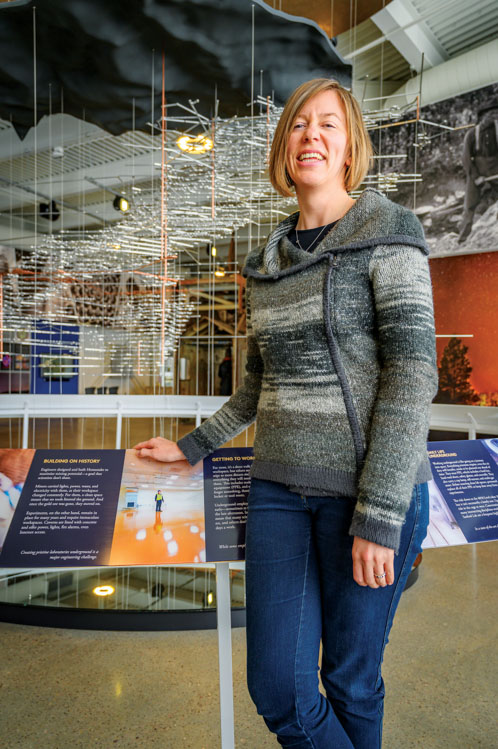 |
| Kelly Kirk is director of the Sanford Homestake Visitor Center. |
A hundred years ago Gwinn Avenue, running a couple blocks south of Main Street, was known as Slavonian Alley (meaning residents with roots in Austria, Hungary, Slovakia and Yugoslavia) and it was a welcoming place for those from other neighborhoods wanting to experience eastern European traditions. Many of those customs stemmed from Catholic feast days. During the week between Christmas and New Year, homes along Gwinn were open house destinations serving cured ham, fresh breads, apple strudel and wine — always wine. “It was quite a challenge to make a trip through Slavonian Alley,” wrote the neighborhood’s Pearl Krilanovich. “To emerge sober was another thing, as the hospitality of the residents knew no bounds.” Wine was made in eastern European fashion, with great quantities of grapes shipped to town in ice-packed railway cars and then mashed by feet. Not bare feet, Krilanovich stressed; rubber boots were worn.
South Dakota also never knew a more tech-savvy little community than Lead. Homestake Gold Mine, in operation for 125 years and the reason South Dakota ranked first among states in gold production for much of the 20th century, drew most of those immigrants. Sometimes outsiders looked at the mine’s productivity and assumed the founders discovered the richest deposit of precious metal on earth. In fact, ore hoisted from Homestake’s depths wasn’t particularly dense with gold. Rather, Homestake’s international workforce perfected technologies not seen before for extracting quantities of gold, and the company became an American leader in developing hydroelectricity for heavy industrial applications. Lead was rightfully proud of its educated and inventive mining personnel, which numbered nearly 2,000 for decades. They engineered vertical shafts that took miners nearly 2 miles into the earth directly below Lead, and through a network of layered, horizontal passages called drifts that extended 400 miles. What’s more, the workforce applied technology that ventilated the vast subterranean world — in fact, air conditioned it in the deepest regions where temperatures approached 100 degrees Fahrenheit.
Twenty years after Homestake’s closure, there are still hard feelings over the way some outsiders discussed a conversion of the mine to a science lab. Lead residents supported the transition — that wasn’t the issue. But they resented the implication that Lead was being introduced to technology for the first time.
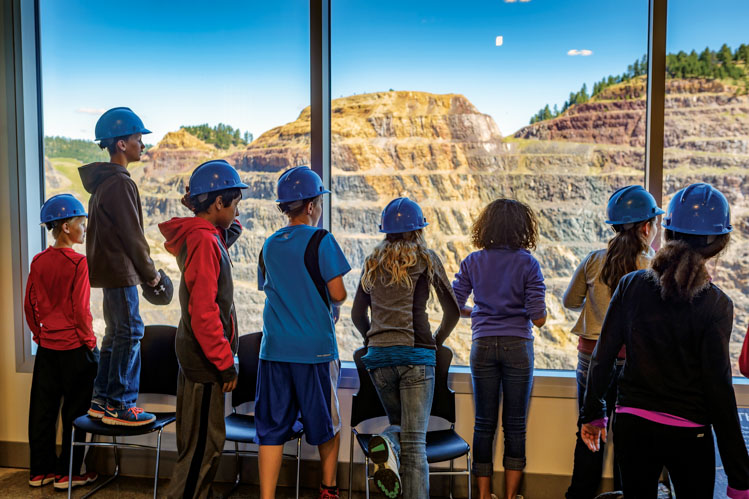 |
| Children peer into the Open Cut from the Sanford Homestake Visitor Center. |
Some observers also compared Lead to unlucky northeastern Rust Belt towns, and predicted that with high industrial wages gone, some residents might just walk away from homes and mortgages. Abandon Black Hills real estate? In the 21st century? Not likely. It’s true that some unemployed miners left the area, but their homes sold, often to people who always hoped to own a piece of the Black Hills before they died. Today there’s some controversy over owners of classic, older Lead homes who are tempted to break them into apartments for much-needed workforce housing. Should local government enforce single-family home zoning in some neighborhoods? The concept violates the libertarian spirit that seems to reign supreme among liberals and conservatives alike in the Black Hills.
Controversy is nothing new to Lead. Homestake’s public relations department in the 20th century (perhaps the best ongoing PR campaign ever in South Dakota) was masterful in communicating how well various ethnicities got along in Lead. Usually that was true, but it would be a mistake to think of life here as one blissful stroll down Slavonian Alley, to employ a local metaphor. The darkest time was 1909-1910, when the mine caught wind of employees hoping to unionize. Homestake locked its crews out until everyone signed papers stating that they belonged to no union and would never join one. Homestake, actually a San Francisco corporation, won. Some Lead families were hungry before the mine reopened and paychecks came again, and there were resentments between families that ran deep and sometimes along ethnic lines. It was easy to believe certain nationalities were not astute in American contractual dealings. Not until 1966 did Homestake miners unionize, and sometimes family splits surfaced again when the time to renegotiate collective bargaining agreements rolled around.
Still, it was possible to grow up without much awareness of those matters. Lead was a lively town, full of diversions — youth sports leagues, arguably the best recreation building in South Dakota the first half of the 20th century, nearby hunting and the Midwest’s longest and most challenging ski slope just up the road at Terry Peak.
 |
| Bob Phillips was not only a member of the Homestake Mining Company Band, he pulled this bass drum through parades while a bandmate played it from behind. It's among many artifacts at the Black Hills Mining Museum. |
Bob Phillips, a retired Lead teacher, coach and school administrator, has witnessed more than half of Lead’s history. He spent his early childhood living in Slavonian Alley and remembers the open houses. “Our family name didn’t end v-i-c-h,” he notes. “But if you lived in the Alley, neighbors made sure you were part of it.” Phillips remembers some of the 16 or 17 grocery stores Lead once supported (many with ethnic specialties), Cornish pasties (a full meal of meat and vegetables baked in a pastry shell), long hours spent in the Homestake Recreation Building and the knowledge he was guaranteed a summer job as a teenager because his dad worked for Homestake. After college Bob and his wife, Cara Pat, traveled to Africa with the Peace Corps and then taught in Minnesota for a year. But then they were drawn back to Lead, “a culture totally distinct from other South Dakota towns,” Phillips says, and they built careers here.
A turning point for Lead came in April 1984 when fire gutted much of the Homestake Recreation Building, built 70 years earlier by the mine as a lifestyle amenity for employees (and, as it turned out, for pretty much everyone else who lived in Lead). The mammoth structure featured a thousand-seat theater, heated swimming pool, bowling alley, library and billiards hall. After the blaze it was determined that insurance alone couldn’t cover a full rebuild and there were people in town ready to write the building off as a lost relic. But others committed themselves to fundraising and rebuilding through a nonprofit corporation. The “rebuild” sentiment became Lead’s majority view and today the nearly lost structure is known as The Historic Homestake Opera House, focusing on a wide range of performing arts. Recent shows, drawing a Black Hills-wide audience, have included touring performers in An Irish Rambling House, stand-up comedian Jason Salmon, as well as a performance series by pianist Kathryn Farruggia. This summer a children’s theater program will put local kids on the big stage. The Opera House is also a popular wedding venue.
Yet 38 years after the fire, the rebuild is not yet complete. The building has a new roof (the original caved in) but marks where flames licked the walls remain visible in the auditorium. For some in the community the scars communicate there’s still work to be done and dollars to be raised. “We have set our sights on the completion of the entire project, raising funds for this massive project,” says opera house Executive Director Thomas Golden. The organization received a National Endowment for the Humanities Challenge Grant and, Golden adds, money “raised as a part of this matching grant will allow us to complete many of the infrastructure related projects such as fire suppression and HVAC.”
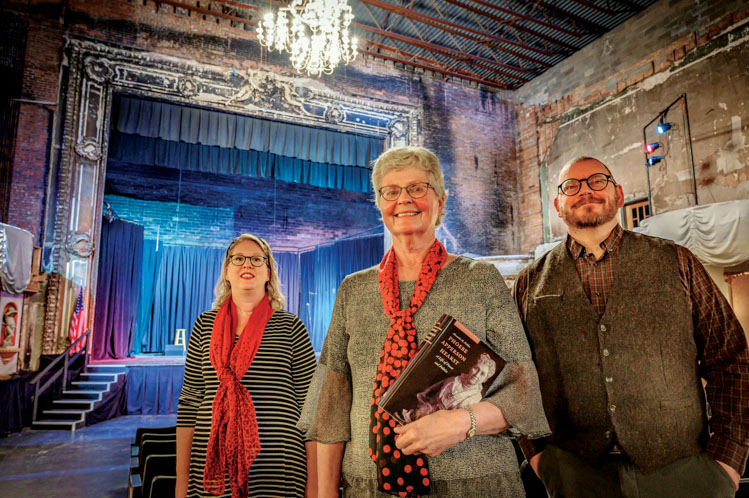 |
| Development Director Christine Allen, President Linda Wiley and Executive Director Thomas Golden (left to right) oversee restoration and events at the Homestake Opera House. |
Opera House President Linda Wiley says the nonprofit has brought together a community within the community, people “who enjoy the work and also one another.” There can be little doubt, she adds, that the evolving success led to action in preserving other aspects of Lead’s history. Wiley didn’t mention it but people from other Black Hills communities did: long gone is an unfair image that Lead fought for generations about being a company town incapable of tackling initiatives without Homestake’s guidance.
Rapid City actors Kurt and Tina Bauer sometimes lend their talents to the opera house for locally produced shows. Kurt understands what Wiley means about a community within a community. “They treat their actors right,” he says, “and they understand Lead. The opera house is the centerpiece of the community.”
Of Lead overall, Tina adds, “it’s a tight little community,” and one that the couple has explored well, especially after discovering the Town Hall Inn bed-and-breakfast, just steps away from the opera house on Main Street. The Bauers sometimes stay there during runs of their shows. It’s another example of Lead taking care of its past. The little hotel was Lead’s 1912 city hall and jail, with rooms bearing their original names: Mayor’s Office, Judge’s Chamber, and so on.
“It was the city hall until the 1930s, when it was replaced by the present one that was built as a WPA project,” says Mark McGrane, the owner along with his wife Jade and his brother Paul. The trio found a perfect use for the old town jail, turning it into a cozy pub called Jailhouse Taps. They brew their own Belgian-style beers.
Blond Alibi and Dungeon Drunkard are locally popular Jailhouse Taps brews. Being a tight-knit community, Lead people are quick to point out another beer producer just up the street — Dakota Shivers Brewing. The affection Lead demonstrates for its beers makes you wonder if they will still be recalled a century from now, much like those legendary Slavonian Alley wines.
Editor’s Note: This story is revised from the May/June 2022 issue of South Dakota Magazine. To order a copy or to subscribe, call (800) 456-5117.


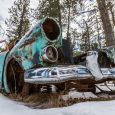
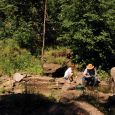
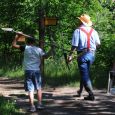
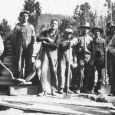

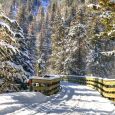


Comments